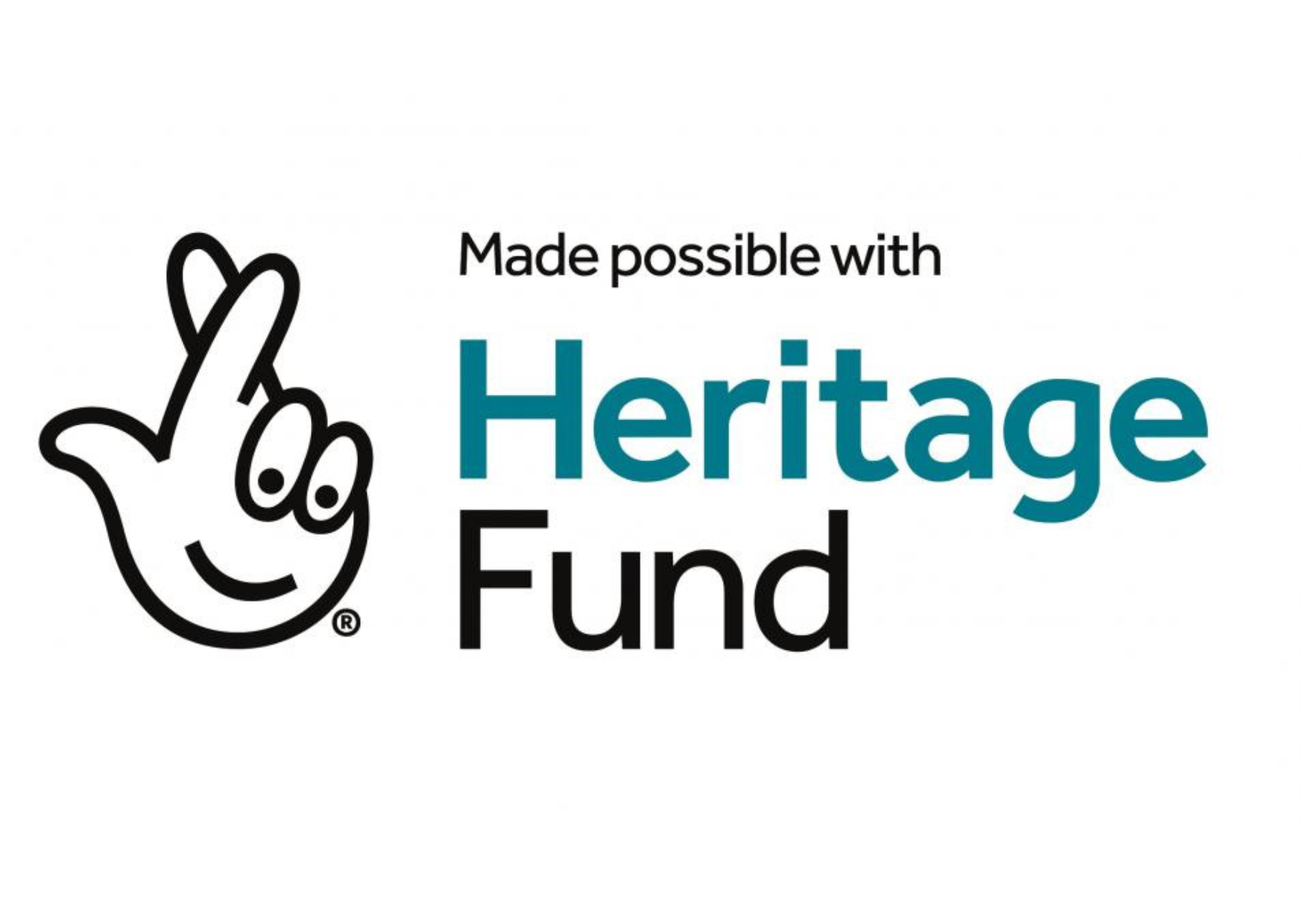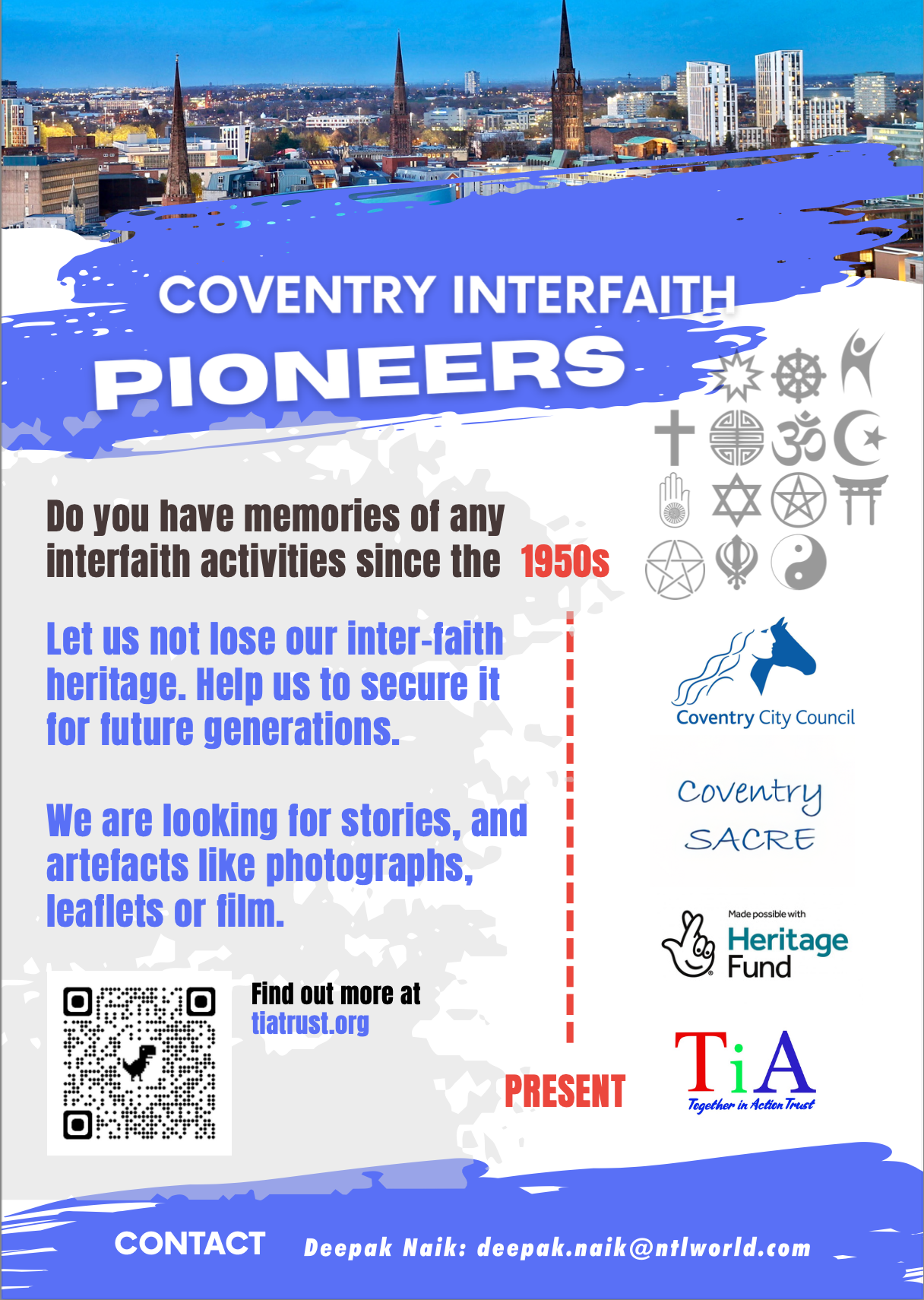Coventry Interfaith Pioneers
Coventry Interfaith Pioneers
A series of videos offers insight into the amazing stories of interfaith development in Coventry. The videos are introduced by Professor Sariya Cheruvallil-Contractor of University Coventry, who offers a context to the interfaith communities in the city. Please click the links below to see the videos.


Part 1 & 2
Coming to Coventry
with
Mehru Fitter
Manjit Kaur
Rev’d Christopher Lamb
Emeritus Professor Eleanor Nisbett
Part 3 & 4
Coming to Coventry
with
Babu Garala .
Jean Prescod
Osman Sheikh
Part 5 & 6
Future is Coventry
with
Deepak Naik
Balbir Sohal
Avi Tordjman
Very Rev’d John Witcomb

If you have an Interfaith Story, please tell us...
It could be a story, an artefact – anything that can illustrate the interfaith work in Coventry. Contact Deepak Naik at deepak.naik@ntlworld.com
Coventry has a long and rich history of interfaith dialogue and cooperation in the West Midlands. The city’s motto, “Peace and Reconciliation,” reflects its commitment to building bridges between faiths and communities. This commitment is evident in the rise of interfaith work in Coventry.
Several factors have contributed to the rise of interfaith work in Coventry. One factor is the city’s diverse population. Coventry is home to people from various faiths, including Christianity, Islam, Hinduism, Sikhism, and Buddhism. This diversity has led to a natural interest in interfaith dialogue and understanding.
Another factor is the city’s history of conflict and reconciliation. Coventry was heavily bombed during World War II, and the Coventry Cathedral, which was destroyed in the bombing, is a symbol of peace and reconciliation. Its story is woven with the threads of dedicated individuals who dared to bridge the divides of belief and build a more inclusive world.
The early seeds of interfaith activity were sown by Canon Richard Howard, a visionary leader who witnessed the devastation of the Blitz first-hand. In 1940, the Coventry Cathedral, a symbol of unity and faith, was reduced to ruins. But amidst the rubble, Howard saw an opportunity for something new, a space where all faiths could come together and heal.
In 1962, Howard’s vision materialised with the Centre for Reconciliation, built on the ruins of the old cathedral. This unique space became a platform for interfaith dialogue, hosting events, exhibitions, and educational programs that fostered understanding and respect between diverse communities.
As Coventry became diverse in the coming decades, people of different communities became the pioneers of interfaith work and its practical implications on society. The success is not solely due to visionary leaders but also the tireless efforts of countless individuals who dedicated themselves to building bridges of faith. These unsung heroes have contributed to the city’s rich tapestry of interfaith work, from volunteers facilitating dialogues to educators shaping young minds.
The role of interfaith work in Coventry has had a number of positive impacts. It has helped build relationships between different faith communities and promoted understanding and respect for different faiths. Interfaith work has also helped to address social issues such as poverty, homelessness, and discrimination.
Looking to the future, the interfaith movement in Coventry will likely continue to grow. There is a growing demand for interfaith dialogue and understanding in Coventry and worldwide. The city of Coventry is well-positioned to be a leader in this movement, thanks to its long history of interfaith work and its commitment to peace and reconciliation.
Coventry continues to be a global leader in interfaith dialogue and action. Its commitment to building bridges of understanding remains as relevant as ever in a world grappling with religious divides. The seeds planted by the countless pioneers – unsung heroes – have blossomed into a vibrant community where faith becomes a force for good, reminding us that compassion is the universal language that transcends all barriers.
It is a testament to the power of human connection and the transformative potential of interfaith understanding. In a world divided, it offers a beacon of hope, reminding us that by embracing our differences, we can build a more just and compassionate world for all.
